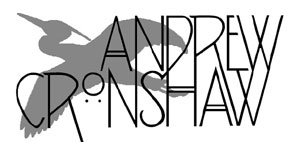
- Andrew Cronshaw website -
- Andrew Cronshaw MySpace -
- Cloud Valley Music website -
- Andrew Cronshaw website -
- Andrew Cronshaw MySpace -
- Back to Reviews Introduction page -
Written in
fRoots
issue 225, 2002
SUSANA SEIVANE
Alma De Buxo
Boa Do Fol 10002028 (2001)
After the freshness of Susana Seivane’s first CD, the thick steaming
diddly-diddly onslaught of Alma De Buxo’s first track, a set of a
pasacorredoiras and two polcas, raises fears of second album pile-it-on
syndrome. But she and Rodrigo Romaní, who also produced her first album, can be
trusted, and as things proceed the texture opens out in a work which has plenty
of light and shade and interesting developments.
For instance, there’s a novel but successful
pairing of her gaita with the agile brass and flute band Agrupación Musical
Harmonía in a springy, parade-style arrangement, by the band’s director, of a
rumba. And this time Seivane takes a lead vocal, in the romantic Roseiras De
Abril, for which she wrote the tune and well-known Galician singer Uxía
Senlle the lyrics. Later, for Muiñeira De Alén, in tribute to the strong
role of women in the Galician song tradition, Susana and Uxía form the acapella
pandeiretera septet Sete Saias with five other female singers including
Chouteira’s Uxía Pedreira, Berrogüetto’s Guadi Galego and long-time Seivane ally
Sonia Lebedynski.
A further tribute is to her grandfather, Xosé
Manuel Seivane, his pipe-making, teaching, and the transmission of music from
generation to generation. He gets a solo track to himself, playing at a family
party two muiñeiras he taught Susana as a child, Chao and Curuxeiras.
On the following track Susana renders them in her own way, accompanied by some
of the album’s core musical group: Brais Maceiras’ diatonic accordion, Xurxo
Iglesias’ bouzouki and Iván Laxe’s bass, with Susana not only on gaita but
showing her command of the instrument’s traditional accompanists, the bombo
(bass drum), tamboril (snare drum) and pandeireta (tambourine).
Romaní, who recently left Milladoiro and recorded
the interesting solo album reviewed in FR 218/219, makes quite a few
contributions on harp, such as the latin-style intro to the rumba Na Terra De
Trasancos, which also features Euskal guest Kepa Junkera, and forming a
delicate trio of gaita, harp and the piano of Roberto Grandal in the romantic
Seivane/Grandal composition Ti E Máis Eu.
The final track is a marcha procesional, a tune
form which might for some be a vehicle for an all-onstage-together rouser, but
Seivane takes it as a gaita solo. It’s a satisfying, focusing closer to an album
(whose title means “soul of boxwood”) from a musician “born amongst bagpipes”
who is dynamic proof of the fresh, rich music still to be found and still being
created at the heart of the living Galician piping and vocal tradition. As she
said in fRoots issue 201, “We play music from before but speaking of now”.
© 2001
Andrew Cronshaw
You're welcome to quote from reviews on this site, but please credit the writer
and fRoots.
Links:
fRoots - The feature and
review-packed UK-based monthly world roots music magazine in which these reviews
were published, and by whose permission they're reproduced here.
It's not practical to give, and keep up to date,
current contact details and sales sources for all the artists and labels in
these reviews, but try Googling for them, and where possible buy direct from the
artists.
CDRoots.com in the USA, run by
Cliff Furnald, is a reliable and independent online retail source, with reviews,
of many of the CDs in these reviews; it's connected to his excellent online magazine
Rootsworld.com
For more reviews click on the regions below
NORDIC
BALTIC
IBERIA (& islands)
CENTRAL & EASTERN EUROPE, & CAUCASUS
OTHER EUROPEAN AMERICAS OTHER, AND WORLD IN GENERAL
- Back to Reviews Introduction page -